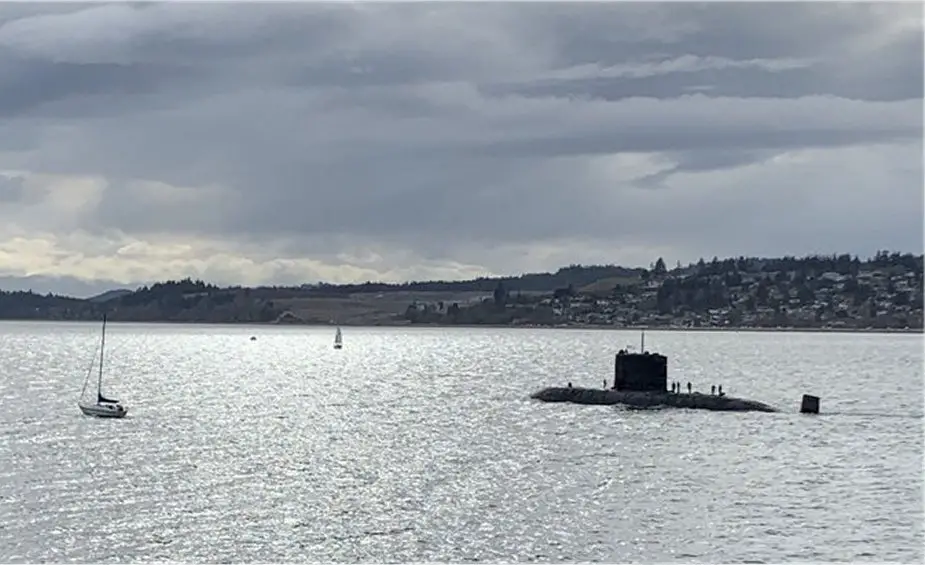According to a tweet published by Royal Canadian Navy on March 9, 2021, HMS Canadian submarine Victoria conducts diving operations in local waters. HMCS Victoria was on the West Coast for operational training and force generation.
According to a tweet published by Royal Canadian Navy on March 9, 2021, HMS Canadian submarine Victoria conducts diving operations in local waters. HMCS Victoria was on the West Coast for operational training and force generation.
Follow Navy Recognition on Google News at this link
 HMCS Victoria is a long-range hunter-killer (SSK) submarine of the Royal Canadian Navy, the lead ship of her class (Picture source: Twitter)
HMCS Victoria is a long-range hunter-killer (SSK) submarine of the Royal Canadian Navy, the lead ship of her class (Picture source: Twitter)
HMCS Victoria was declared fully operational in 2012. Since that time, Victoria has participated in various advanced international exercises such as the Rim of the Pacific (RIMPAC), revealing the modern and unique capabilities of the Victoria-class submarine while providing anti-submarine training for Canadian and international maritime vessels. As part of RIMPAC 2012, Victoria was the first of its class to fire the Royal Canadian Navy (RCN) Mk48 torpedo, sinking the decommissioned United States Naval Ship Concord. This clearly demonstrated the lethality of Victoria-class submarines.
Victoria worked with Special Forces during Joint Exercise 2013 and other binational continental defence exercises, and also participated in operations on behalf of Canada.
As built the Upholder/Victoria class was designed as a replacement for the Oberon class for use as hunter-killer and training subs. The submarines, which have a single-skinned, teardrop-shaped hull, displace 2,220 long tons (2,260 t) surfaced and 2,455 long tons (2,494 t) submerged. They are 230 feet 7 inches (70.3 m) long overall with a beam of 25 feet 0 inches (7.6 m) and a draught of 17 feet 8 inches (5.4 m).
The submarines are powered by a one shaft diesel-electric system. They are equipped with two Paxman Valenta 1600 RPS SZ diesel engines each driving a 1.4-megawatt (1,900 hp) GEC electric alternator with two 120-cell chloride batteries. The batteries have a 90-hour endurance at 3 knots (5.6 km/h; 3.5 mph). The ship is propelled by a 4.028-megawatt (5,402 hp) GEC dual armature electric motor turning a seven-blade fixed pitch propeller. They have a 200-long-ton (200 t) diesel capacity. This gives the subs a maximum speed of 12 knots (22 km/h; 14 mph) on the surface and 20 knots (37 km/h; 23 mph) submerged. They have a range of 8,000 nautical miles (15,000 km; 9,200 mi) at 8 knots (15 km/h; 9.2 mph) and 10,000 nautical miles (19,000 km; 12,000 mi) at snorting depth. The class has a reported dive depth of over 650 feet (200 m).
The Upholder/Victoria class are armed with six 21-inch (533 mm) torpedo tubes. They could also be adapted for use as a minelayer. The submarines have Type 1007 radar and Type 2040, Type 2019, Type 2007 and Type 2046 sonar installed. The hull is fitted with elastomeric acoustic tiles to reduce acoustic signature. In British service the vessels had a complement of seven officers and 40 ratings.







